Earthquake/Tsunami Factor of House Buying
Unfortunately, the terrible earthquake and tsunami in Japan, has people thinking "Could that really happen here?" The answer is; Yes. Although it wouldn't be 8.9 in magnitude, the local faults here could produce an earthquake in the 7s. This isn't anything new, but I am sure your local real estate agent hasn't mentioned it. Seismic hazard zone disclosures are required in any real estate transaction, but are usually scant and buried somewhere in a mound of paperwork. To be honest, Los Angeles is riddled with faults, but the major ones of concern are:
1) Santa Monica/Malibu Fault
2) Newport/Inglewood Fault
3) Elysian Park Fault
4) Whittier Fault
5) Palos Verdes Fault
6) Northridge Fault
and of course,
7) San Andreas Fault
In reality, there are many unknown faults in Los Angeles called blind thrusts (buried beneath the surface), that are invisible. The Northridge Earthquake of 1994 is a previously undiscovered blind thrust fault. Anyplace in the city where small hills or mountains exist, is due to faulting. For example, The Culver Crest Area in Culver City has great views, because it sits at the end of the Newport/Inglewood fault. Even though most people prefer not to think about earthquakes when buying a home, it should factor in your decision. The LA Basin happens to be one of the most seismically active areas in the world.
So which area would be most impacted? It depends on the fault in question. Perhaps, the 2 faults of most concern are; the Santa Monica/Malibu and Newport/Inglewood Faults. Not the San Andreas Fault. The San Andreas Fault, capable of a magnitude 8 earthquake is located over 60 miles away. Our local faults, although smaller, are located right here. The Santa Monica/Malibu Fault extends from Los Feliz, all along the Santa Monica Mountains west, to Malibu. From there, it continues offshore into the Santa Monica Bay. If a magnitude 6 or 7 earthquake occurs offshore, we almost certainly will have a tsunami. The most affected would be the low lying areas of:
Malibu (Malibu Colony)
Santa Monica (Ocean Park)
Venice (Oakwood/ Boardwalk Area)
Marina del Rey (Entire area)
Playa Vista & Culver City (Ballona Creek)
Mar Vista (Marina del Rey Adjacent)
Playa del Rey (Jungle Area)
El Segundo (Strand)
Manhattan Beach (Strand)
Hemosa Beach (Strand)
Redondo Beach (Strand)
Marina del Rey especially, would take the worst hit.
The Newport/Inglewood Fault, capable of a 7.0 earthquake, would devastate the communities from Newport to Culver City and its surrounding areas. It too, extends offshore along with the Palos Verdes Fault, and both are capable of a tsunamis.In conclusion, I would consider a few things about earthquakes and tsunamis before buying a home close to Santa Monica Bay. First, avoid subterranean parking at all cost. They are known to collapse in severe shaking. Secondly, buy earthquake insurance. If it is not available, find another home. Third, pay attention to Tsunami Zone and Earthquake Zone Maps. They are there for a reason. If you want an ocean view, elevate yourself some, rather than being oceanfront at ground level. Lastly, always make sure the homes' foundation is solid and hasn't been damaged in the past.
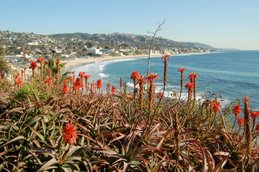
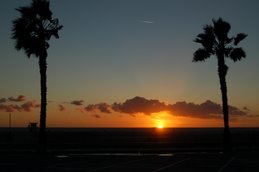

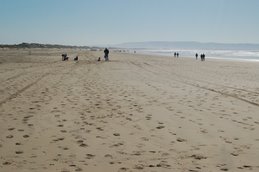
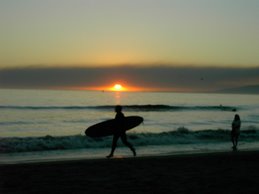





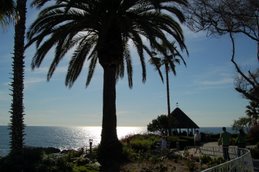
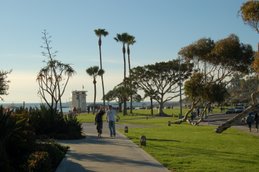
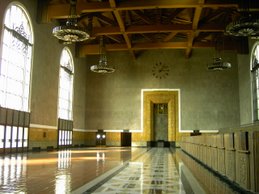
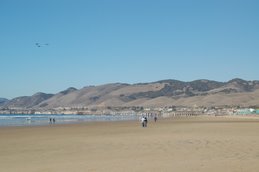
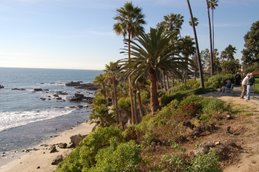

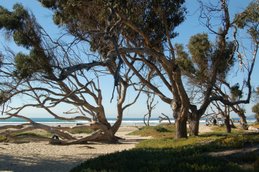
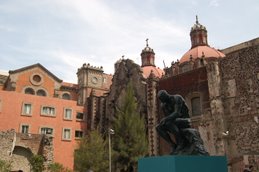
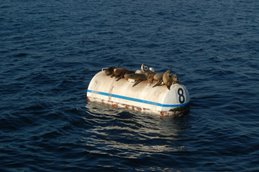
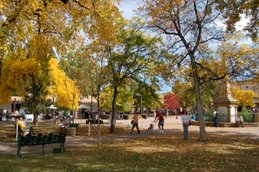

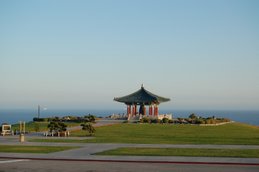
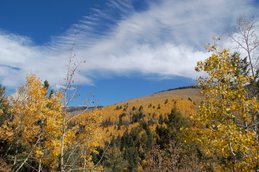





11 comments:
Funny thing is, so many people think "oh it's beachfront property, the demand will always be there...the closer to the ocean the more valuable" blah blah blah.
Not even 100 years ago, areas like Santa Monica, Marina del Rey, Balboa Island/Newport Beach etc. were HIGHLY undesirable because people/doctors thought the misty/higher humidity of these lowlying coastal areas were bad and possibly caused (or made worse) tubercolosis, consumption etc. Now, we are constantly reminded of the problems of coastal erosion/landslides and ocean surges/floods from El Nino, tsunamis, earthquakes, and global warming/sea level rising. Severe ocean pollution.
We experience cycles in nature and demand...
Great article btw, and so true. These are things that we MUST consider and ponder.
Just a small thing... from a ten year resident of the Marina...
Marina del Rey is actually engineered to withstand storm surges of ten feet. When the rest of LA is flooding during storms, the Marina is very dry. Yes, the peninsula may take the brunt of a tidal wave but the interior basins will probably be better off than the Venice Canals and other areas near by.
Anon II- A storm surge is water rising from below. A tsunami is a huge wave approaching not from below, but from ABOVE because it is so high. No amount of storm surge prep can counteract a tsunami, the only thing that will protect you is high ground far from the ocean.
I have training in disaster prep, and when we finally shop for a home, here are things I will look for:
Built after 1965 or retrofitted (bolted to foundation, etc.)
Solid ground (I'm going to spend $500 to hire a local Geology grad student to compare the stability of different neighborhoods we're looking at. Why a grad student? Because they will be working for ME, not a company or government entity.)
City emergency plan. It's not just about surviving the shaking- it's about if the city has plans to get you aid and emergency services/water/sewers/gas/power running afterward. If your city has no post-disaster contracts and planning for recovery, you could be paying a mortgage on a lot full of rubble AND another home elsewhere for years before you can rebuild. Banks don't care if you can live in the house or not.
As a matter of fact, when we DO buy property, I plan on asking local planning committee if I can get a pre-fab home plans approved and on file with the city to allow me to clear the rubble and rebuild my home ASAP if it is declared unlivable.
If you want safe and good civic planning, Burbank is the cream of the crop for being prepared for survival and recovery from natural disasters.
All that said, I'm also a member of the Los Angeles disaster response corps, and in our last meeting, the talk was about not "if" but "How soon" the Big One was going to hit. All these bits of the planet are connected, so something shaking in Japan means a high chance of things moving here. PLEASE get 5 to 10 days of water and food together along with survival supplies, and get some first aid and CERT training if you can. Heck, lay in more so you can help out your neighbors as well. Planners say our roads will be impassible, and many places will be on their own for as much as a week. I don't want to be "doom and gloom"- but this threat is real.
In my job, I work closely with both the state of CA and Insurance companies. Both the state and Insurance companies have already done incredible work to forecast the costs of global climate change to CA...
And let's put the likelyhood of a Tsunami/earthquake aside, because that's incredibly hard to predict. But flooding because of rising sea levels is absolute. Right now they say it's about 50 years out that MDR, Venice, SM and the Bay Area will be affected.
That's pretty well considered fact by all the major insurers and the state..so I'm very confused why that's not part of our dialog and why that hasn't affected home values already.
Look at the way the Marina is situated. Aside from the peninsula, the rest of the Marina - what locals call the basins, is relatively safer than other oceanside communities.
You may be an expert in disaster but you need to also understand oceanography or marine topography to really call forth on this. A tsunami hitting the Marina would be buffered by an extraordinarily wide beach, a peninsula and canal and another peninsula before hitting the basins. The main channel would direct much of the force into it and the result would be rising water levels just like storm surge.
I'm not saying there wouldn't be damage but compared to the rest of the beach communities, we will be somewhat better off...
And most experts agree that "the big one" in CA will not cause a tsunami - that's simply the way the faults have developed around here...
Oceanfront residences have much more to fear from storms, erosion, and rising sea levels than a tsunami...
True, oceanfront property would fare badly in an earthquake. However, an unobstructed pathway like the main channel and Ballona Creek would get an enormous surge. And don't forget, all of that used to be swamps back in the 60s. The soil is extremely unstable and would liquefy horribly in a large earthquake/tsunami. Any large condominum project is likely to sink or fall over. Lookwhat happened in the Marina District of San Francisco in the 1906 earthquake.
Even though we don't have a subduction zone type plate boundary here, our local faults are what we need to be aware of. Especially with faults that run offshore (Santa Monica/Malibu, Palos Verdes, Inglewood/Newport)It's not just the San Andreas Fault that we should be considering here.
"the rest of the Marina - what locals call the basins, is relatively safer than other oceanside communities."
You are just plain wrong. click the tsunami map link in this post, then download the pdf for the venice quadrangle containing MDR. Underwater.
Very interesting story in the LA Times this morning about Earthquake Insurance. Very few have it, due to the high cost of $3,000/year for a 2000 sqft house, along with a 10-15% deductible. It's still better than a 100% loss in an earthquake prone area.
Hi, thank you for writing on this subject. I have been looking for something like this and your blog helps me a lot to understand the topic better. Waiting for your next post.
Geologists just discovered that the Newport/Inglewood Fault is releasing helium gas from the earth's mantle. Here is the story if your interested.
http://phys.org/news/2015-06-geologists-discoveries-newport-inglewood-fault-zone.html
It's a nice point some of you raised here - what is important is actually the type of soil that lies beneath the property. A building that is directly on the coastline (such as this one - http://sabbiabeachcondos.com/gallery) could incur little damage in case of a tsunami or an earthquake than a structure that is farther from the ocean but is built on some sort of swampy soil.
Post a Comment